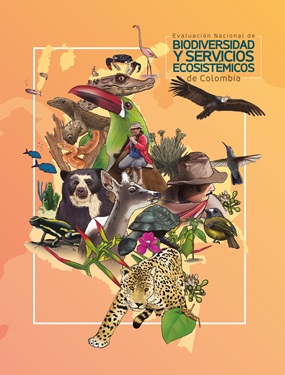 | Colombia's National Biodiversity and Ecosystem Services Assessment, projected to 2050, provides strategic information on biodiversity and its relationship to human well-being. It seeks to facilitate better policy understanding by characterizing the state and change of nature and society, as well as projecting possible futures. Initiated in 2017, it involved 106 independent experts and local communities, enriching the analysis with diverse perspectives. The assessment was conducted based on the IPBES conceptual framework and methodology. - Among its main findings, the following are highlighted: :
- Less than 10% of Colombia's species have genetic information available.
- Nearly 20% of Colombia's population is exposed to water scarcity.
- The forests of the Andean, Amazon and Pacific regions contain most of the country's carbon storage.
- The agreements, regulations, protocols and other norms and strategies of the peoples for the protection and management of their territories are basic mechanisms for the conservation of biocultural diversity.
- Habitat loss and degradation are the main direct drivers of transformation and decline of biodiversity and nature's contributions to people.
- Improving biodiversity governance systems implies that civil society must be strengthened organizationally, advocating for and making better use of existing spaces for participation.
- Studies of future trends in species distribution change allow us to identify declared protected areas that will have a high value in species adaptation processes.
|
Access here to the technical document of the NEA
Source: Colombia National Ecosystem Assessment


